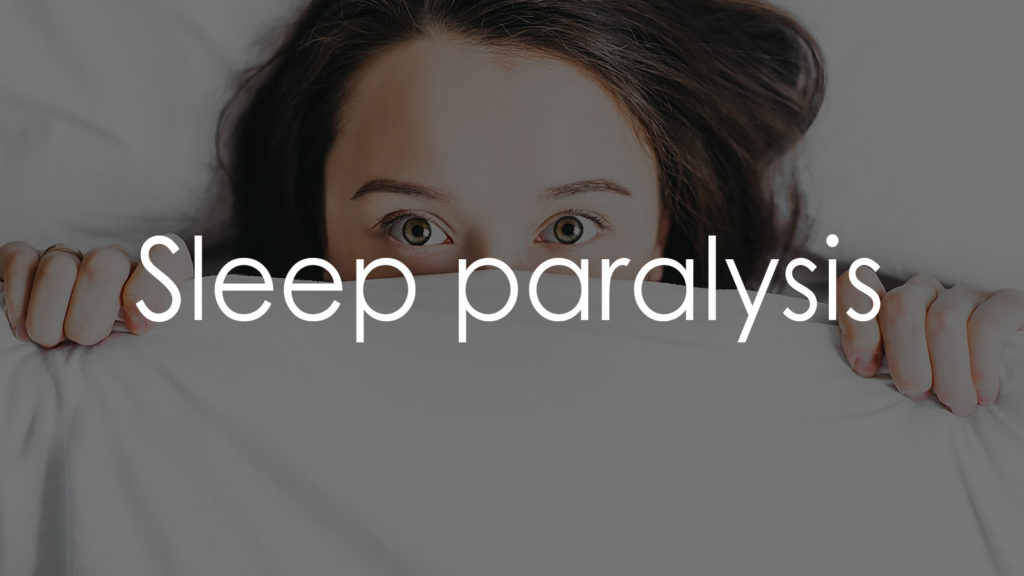Sleep paralysis is a condition that occurs when a person is unable to move or speak while transitioning between sleep and wakefulness. Often accompanied by vivid hallucinations and a feeling of intense fear, the experience can be terrifying. Understanding the symptoms of sleep paralysis is crucial for identifying and addressing the condition.

Inability to Move
The hallmark symptom of sleep paralysis is the temporary inability to move the body. This paralysis occurs during the transition from sleep to wakefulness or vice versa. The person may feel fully awake mentally but is unable to control their physical movements. This sensation typically lasts from a few seconds to a couple of minutes but can feel much longer to the person experiencing it.
Conscious Awareness During Paralysis
Another key symptom is the individual’s consciousness during the episode. Even though they are unable to move or speak, they are often fully aware of their surroundings. They may hear sounds, feel the texture of the bed, or even see parts of the room. This awareness during immobility can heighten feelings of anxiety and fear.
Chest Pressure or Difficulty Breathing
Many individuals report a sensation of chest pressure during sleep paralysis, which may feel like someone is sitting on their chest or pressing down on their lungs. This can make it feel difficult to breathe, although the actual ability to breathe is not compromised. The sensation of suffocation is one of the most distressing aspects of sleep paralysis, often causing panic during the episode.
Hallucinations
Hallucinations are common during sleep paralysis and can be auditory, visual, or tactile. These hallucinations occur because the brain is partially awake while still in the REM (rapid eye movement) stage of sleep, where vivid dreams usually take place. The most frequent types of hallucinations include:
- Visual hallucinations: People may see shadowy figures, creatures, or even bright lights in the room. These hallucinations are often terrifying and can feel very real.
- Auditory hallucinations: Hearing footsteps, whispers, or other sounds is common. These sounds can range from faint and unclear to loud and distinct, contributing to the fear associated with sleep paralysis.
- Tactile hallucinations: Some individuals feel like they are being touched, pulled, or even levitated. This sensation can make the experience even more frightening and disorienting.
Fear and Anxiety
An overwhelming sense of fear or dread is another symptom of sleep paralysis. This fear is often irrational but feels incredibly real due to the inability to move and the disturbing hallucinations. Some people feel as though they are in danger or that there is an evil presence in the room. This intense fear can linger after the episode ends, contributing to anxiety around sleep.
Sense of Detachment or Out-of-Body Experience
Many people describe a sensation of detachment from their body, almost as if they are watching themselves from above or experiencing an out-of-body event. This feeling of floating or being outside one’s physical self can be disorienting and often occurs in conjunction with other symptoms like hallucinations and paralysis.
Sensation of Being Watched or Followed
A common experience during sleep paralysis is the feeling of being watched or followed. This can be coupled with hallucinations of seeing figures in the room or feeling a presence close by. The sensation of being watched is deeply unsettling and adds to the intensity of the fear experienced during an episode.
Tingling or Numbness
While sleep paralysis prevents voluntary movement, some individuals report a tingling or numbing sensation in their limbs. This feeling is often accompanied by the overwhelming urge to move but an inability to do so. The tingling can feel like pins and needles or a mild electric shock running through the body.
Short Duration of Episodes
Sleep paralysis episodes typically last only a few seconds to a couple of minutes, but the symptoms can feel much longer due to the intensity of the experience. Once the episode ends, normal movement and speech return quickly, although the emotional impact may linger.
Aftermath of Sleep Paralysis
After an episode, individuals often feel anxious, confused, or shaken. It may take some time to calm down and fully return to a normal state. The lingering fear of experiencing another episode can cause future sleep disturbances, such as insomnia or reluctance to go to bed.
Conclusion
Sleep paralysis is characterized by a range of unsettling symptoms, from the inability to move to vivid hallucinations and intense fear. Recognizing these symptoms can help individuals understand what is happening during an episode and alleviate some of the associated anxiety. While sleep paralysis is not harmful, the experience can be distressing, particularly for those who are unfamiliar with its symptoms.